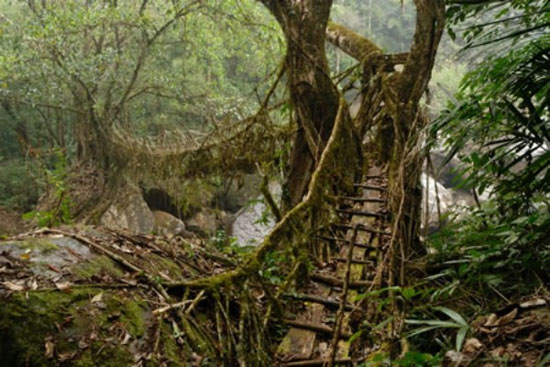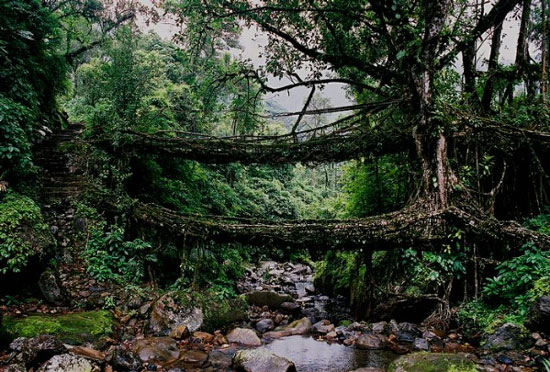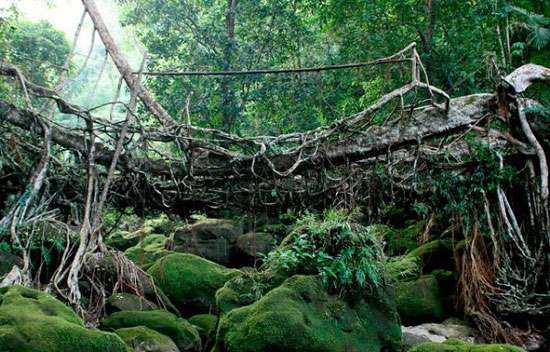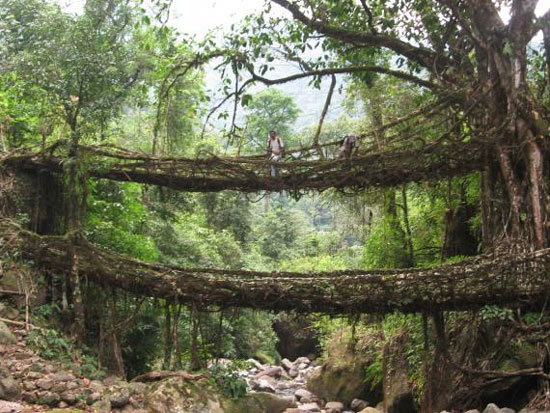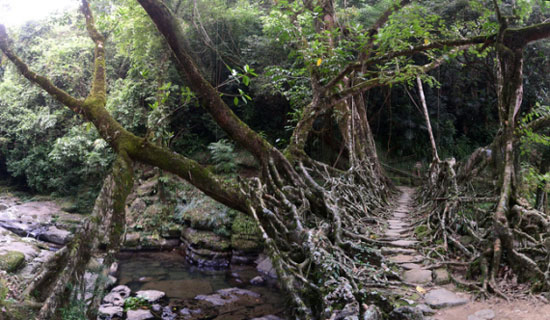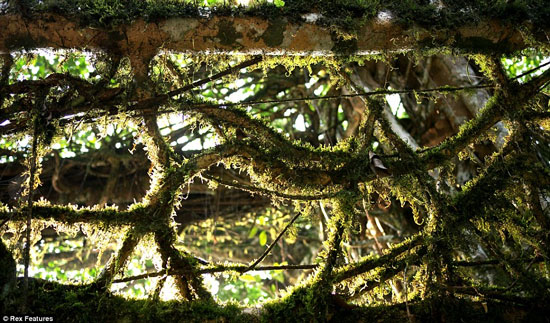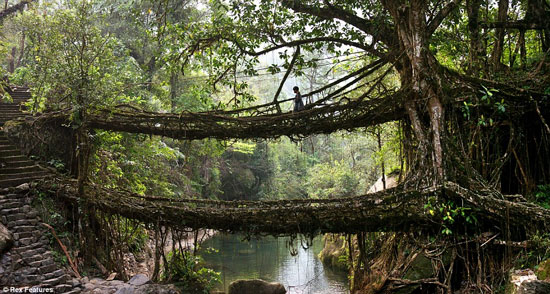Visitors to the state of Meghalaya in India will be truly amazed by a breathtaking natural masterpiece that resembles a fantasy painting.
Cherrapunji, a town in Northeast India, is known as the second wettest place on Earth, and it is also famous for its living root bridges. Here, the bridges are not constructed in conventional ways; they do not deteriorate over time. Instead, they continue to grow and become more sustainable. These living root bridges are made from the roots of the Ficus elastica – the rubber fig tree – a species that has aerial roots that grow above ground.
Initially, the rubber fig trees are planted along the riverbanks. As they develop, the aerial roots extend from the trunk and cling to large boulders along the riverbank. Gradually, they reach across the river and anchor to the opposite bank, forming a sturdy and safe bridge. These root bridges can be over 30 meters long and can support the weight of more than 50 people at once. However, the aerial roots take about 10 to 15 years to fully develop.
Unlike conventional artificial bridges that weaken over time, these living root bridges actually strengthen as they age. Some of the bridges here are formed from roots that are over five hundred (500) years old and can support 50 people crossing simultaneously. The most unique bridge is known as the Umshiang Double-Decker Root Bridge – “Umshiang Two-Tier Root Bridge”.

